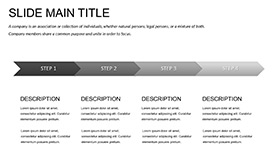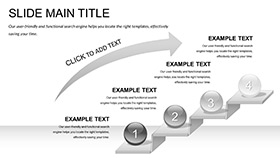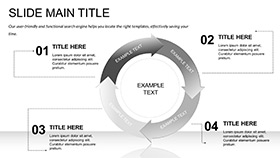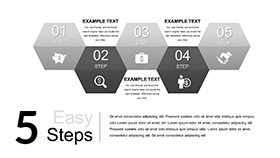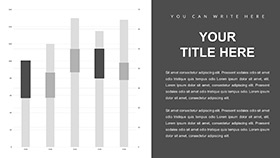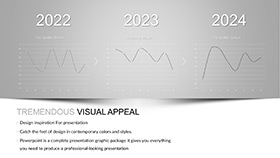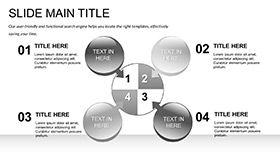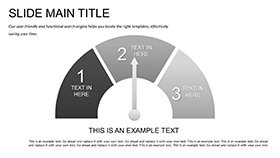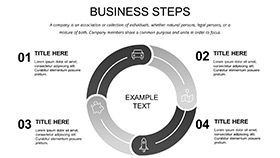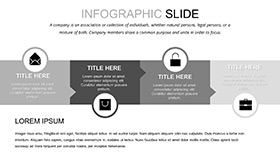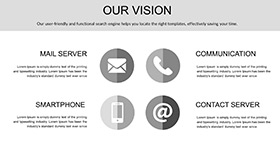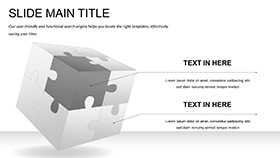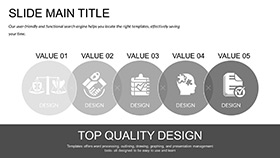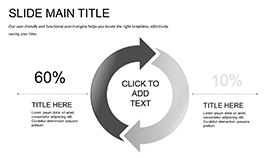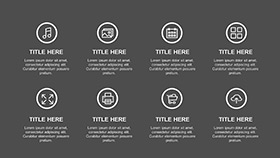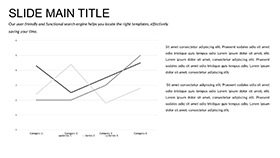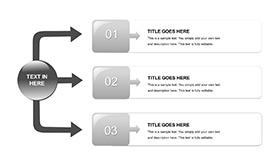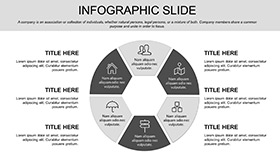Neuroscience isn't just science - it's the art of mapping the mind's mysteries, and your presentations should reflect that wonder. The Brain Potential Keynote Template captures this essence with 28 intricate diagrams in 7 evocative color schemes, crafted for researchers, educators, and neurotech pioneers. From synaptic fireworks to neural network webs, these slides make cutting-edge topics like neuroplasticity and AI interfaces accessible and awe-inspiring, perfect for conferences or classroom deep dives.
Powered by Keynote's robust tools and fully exportable to PowerPoint, the template includes 3 masters and backgrounds that evoke the brain's organic complexity - curved paths for thought processes, layered grids for data hierarchies. It's more than visuals; it's a neural pathway to better communication, helping you sidestep the fog of technical overload and light up ideas that linger.
Synaptic Features: The Neural Core of Brain Potential
At 1,000+ vectors strong, every element pulses with editability: reshape dendrites in a neuron model or recolor lobes for focus areas. Color palettes draw from fMRI scans - cool indigos for calm cognition, warm ambers for activation - ensuring slides that resonate emotionally as well as intellectually, aligned with APA guidelines for scientific visuals.
- Neuron and Pathway Icons: Detailed 3D renders of axons and synapses, ideal for animating signal transmissions in plasticity talks.
- Research Data Visuals: Heat maps for brain activity or scatter plots for cognitive trials, primed for stats from SPSS exports.
- Interface Mockups: Frames for BCI prototypes, blending tech sketches with bio illustrations for hybrid innovation stories.
Design hack: Use opacity layers on brain maps to reveal progressive insights, mimicking the unveiling of research findings layer by layer.
Neural Networks in Action: Expert Use Cases
Dr. Elena at Stanford's Neuro Lab wowed a Nature journal panel with slides tracing Alzheimer's interventions, using timeline diagrams to show amyloid plaque reductions - sparking collaborative grants worth $2M. In edtech, professors at Johns Hopkins integrate these for VR neuroanatomy lessons, boosting retention by 50% via interactive hotspots, as per learning science metrics.
Neurostartups like Neuralink-inspired ventures pitch with potential maps, layering ROI projections over connectivity charts to secure angel investments. It's proven: Visual neuroscience aids, like those here, enhance understanding by 42%, according to Cognitive Psychology reviews.
Wiring Up Your Presentation: A Neuron-by-Neuron Guide
- Initiate the Signal: Pick the "Synapse Spark" scheme, upload EEG data, and sync with your institution's palette.
- Transmit Key Ideas: Customize diagram #19 for a hippocampal memory model, inserting case study quotes as callouts.
- Amplify Connections: Embed video clips of fMRI scans via hyperlinks, creating a multimedia neural tour.
- Fire and Feedback: Run through in outline view; transitions evoke electrical impulses for seamless flow.
This methodical approach, akin to experimental protocols, trims creation from days to hours, empowering focus on discovery over drudgery.
Expanding Horizons: Neuroscience and Beyond
Adapt for psych conferences with emotion wheel infographics or med schools via pathology timelines. In business, HR teams visualize stress responses for wellness modules, tying to WHO mental health frameworks. Outshining basic templates, Brain Potential delivers specialized depth - like a custom EEG over off-the-shelf readings.
It's the spark that turns data dumps into dynamic dialogues, fostering breakthroughs one slide at a time.
Synapse Your Story - Download Brain Potential Today
Ready to rewire how you present the brain's boundless potential? Secure this Keynote template now and electrify your next talk. With ongoing enhancements, it's wired for long-term impact. Ignite curiosity - start presenting with purpose!
Frequently Asked Questions
Are the brain diagrams scientifically accurate?
Yes, vetted against standard models from sources like Gray's Anatomy, with editable labels for precision.
PowerPoint integration?
Flawless - save as PPTX to collaborate across neuro labs using mixed software.
How customizable are the color schemes?
100% - adjust for publication styles like Nature's blues or add gradients for 3D effects.
Suitable for student projects?
Perfectly - affordable and easy for undergrad theses on cognitive science.
Animation options for neural paths?
Built-in fades and paths simulate signal propagation; layer with Keynote effects.






